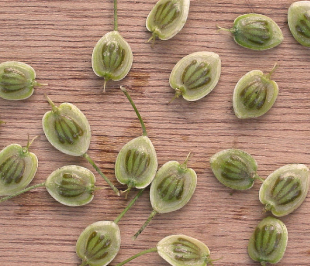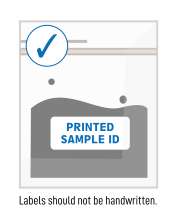
To obtain an estimate or formal quotation, please send the paying institution’s billing address, the number of samples you plan to analyze, and the AMS service you’ve selected (Standard, Priority or Time Guide). Please also indicate in this form if the samples require cellulose extraction, solvent extraction, or both.
 Fees are inclusive of quality assurance reports, calendar calibration when applicable, and 24/7 web access to past results and pending analyses.
Fees are inclusive of quality assurance reports, calendar calibration when applicable, and 24/7 web access to past results and pending analyses.
Pretreatment – It is important to understand the pretreatment applied to samples since they directly affect the final result. When it comes to small samples like seeds and grains, our major consideration is always our ability to fully pretreat for secondary carbon contamination.
It’s difficult to know exactly how much material the lab will need from any given sample. Even “dry weight” is usually relative. It’s not uncommon for the lab to see a 15% reduction in weight just by putting a dry sample in an oven overnight at 110ºC. Usually after pretreatment, the sample size is reduced by 30-70% depending on many factors relating to the species type, preservation, moisture content, etc.
Sample Selection – When selecting samples to send to the lab for radiocarbon dating, please take note that charring is a major significance. Ten milligrams (10 mg) of charred grain is a very different sample from 10 mg of non-charred grain. Charring acts as a great vehicle for preservation and resistance to chemical attack by the alkali used in the pretreatment.
For AMS dating, we usually recommend 20 mg of sample as many times the material sent includes a lot of adhering sediment or other materials that need to be removed from the sample prior to dating.
You can place the seeds, grains, or plants in aluminum foil or plastic tubes before placing them in a Ziplock bag. Please put each sample in separate Ziplock bags to prevent mixing during shipment in case of breakage.
There are several ways to approach very small samples:
1 – Full Pretreatment (acid/alkali/acid washes)
The entire sample will be destroyed in the process. If there’s insufficient sample left after pretreatment, the analysis is put on hold pending the client’s submission of supplement samples. If the client cannot send more seeds or grains, the analysis will be cancelled.
2 – Careful Pretreatment
We will very carefully apply limiting acid and alkali pretreatment to keep the sample large enough to measure.
3 – Skip Alkali Step
We can skip the alkali wash. This is effective in scenarios where secondary humic acids/decaying debris are not a factor.
4 – No Pretreatment
Not pretreating at all is generally not recommended except in extreme cases.
If the seeds or grains are well preserved, dry and do not have any adhering sediment on them, 4 mg should be sufficient for AMS dating.
After pretreatment, if the lab has 1.8 mg of the sample then it will be a standard AMS date. If smaller than 1.8 mg but more than 1.3 mg, the lab may not be able to report a separate δ13C ratio from the CO2 generated at the time of combustion.
The lab does not analyze extremely small samples (i.e. when the available carbon after pretreatment is less than 200 micrograms carbon) because there can be effects within the AMS machine itself that add indeterminate errors to the result.
Image credit: Rasbak (licensed under CC BY-SA 3.0)
Page last updated: October 2022